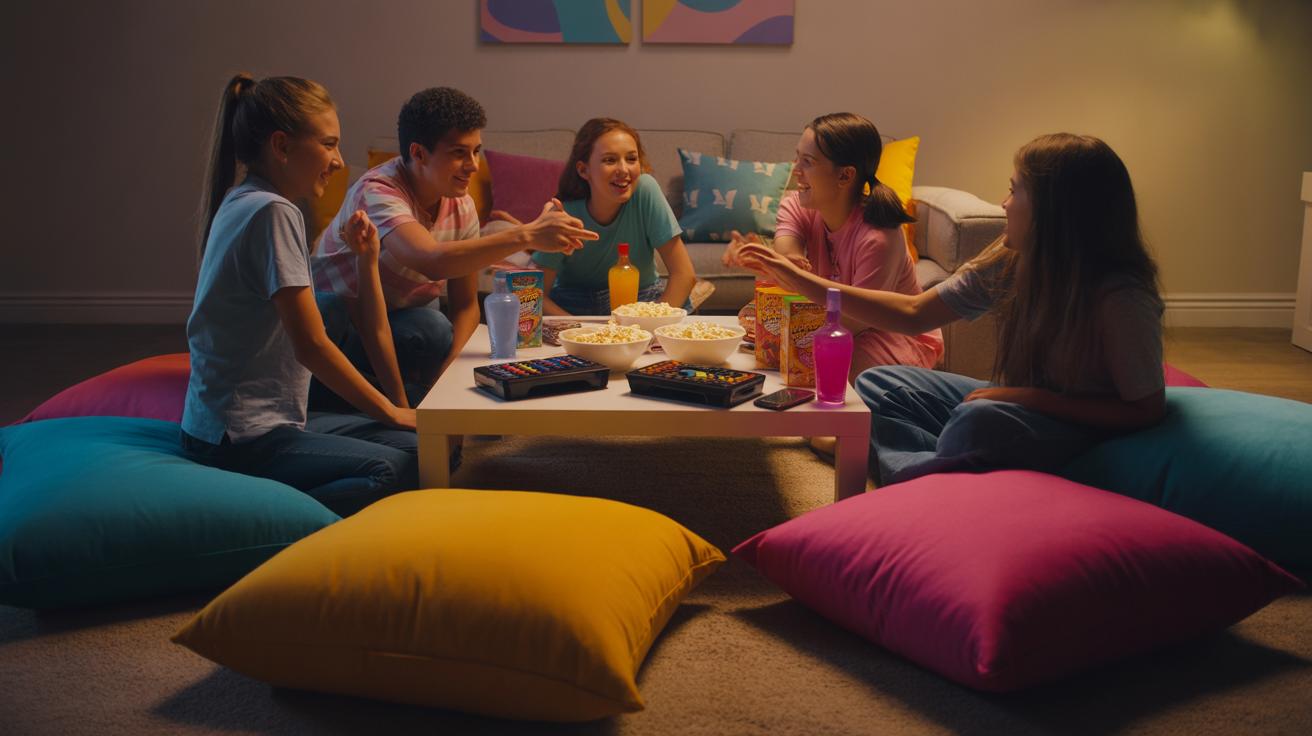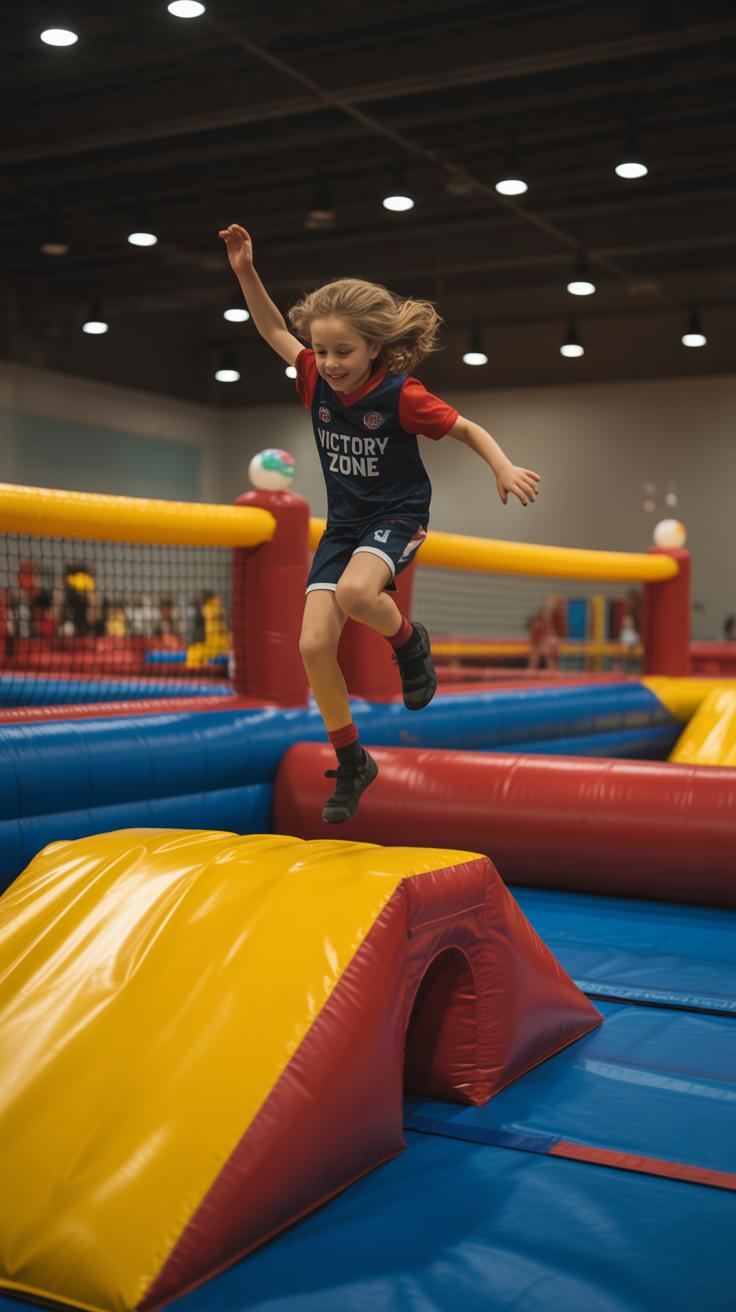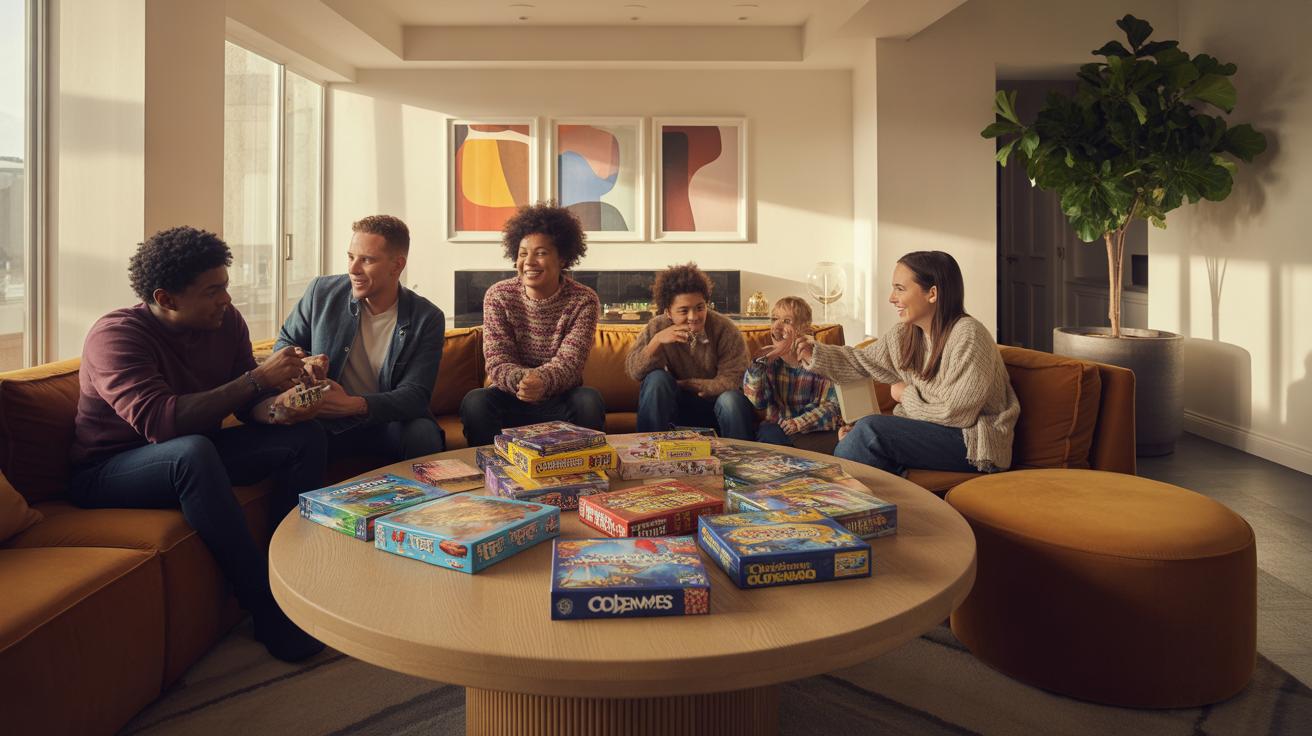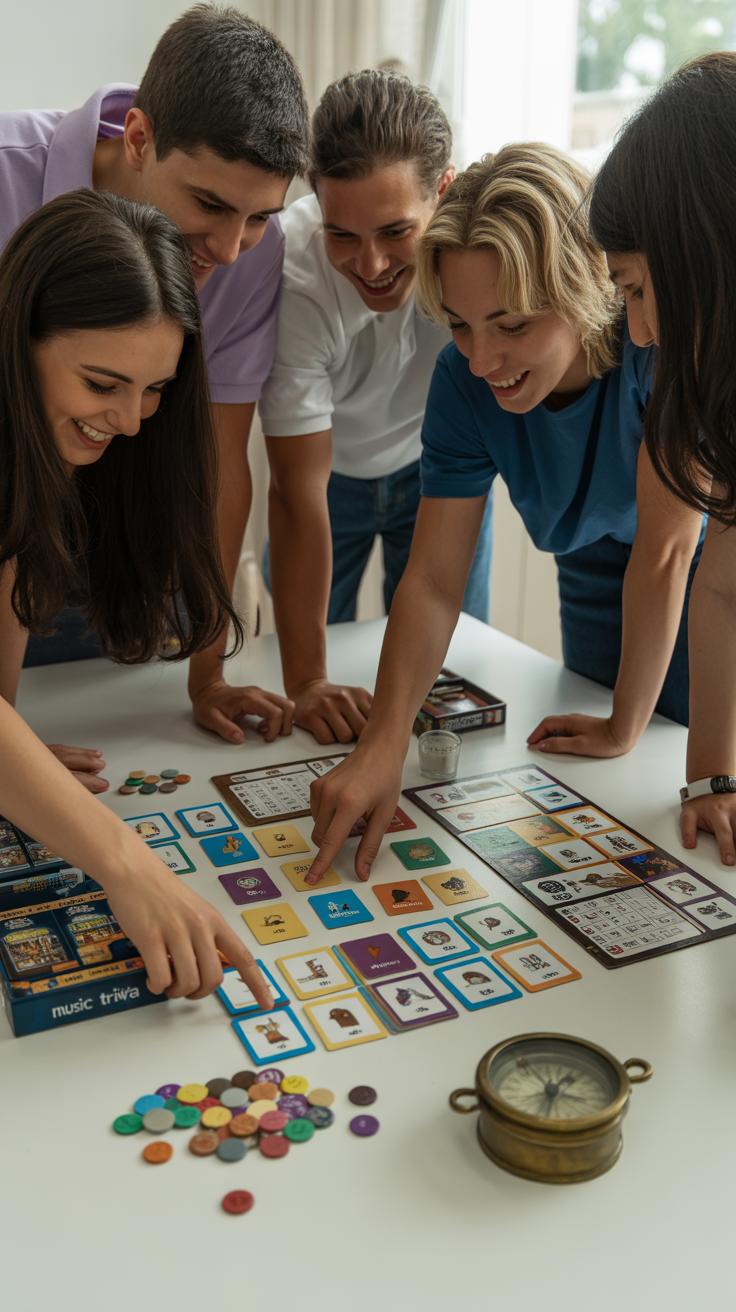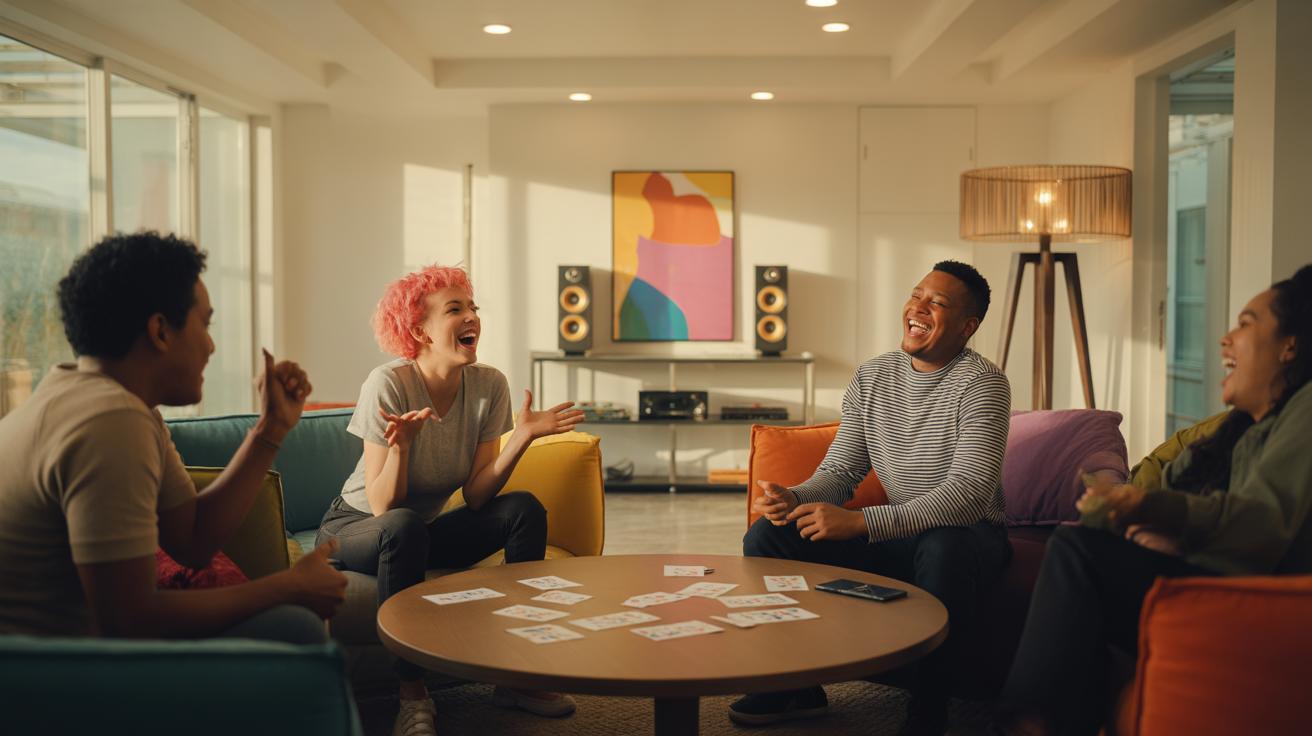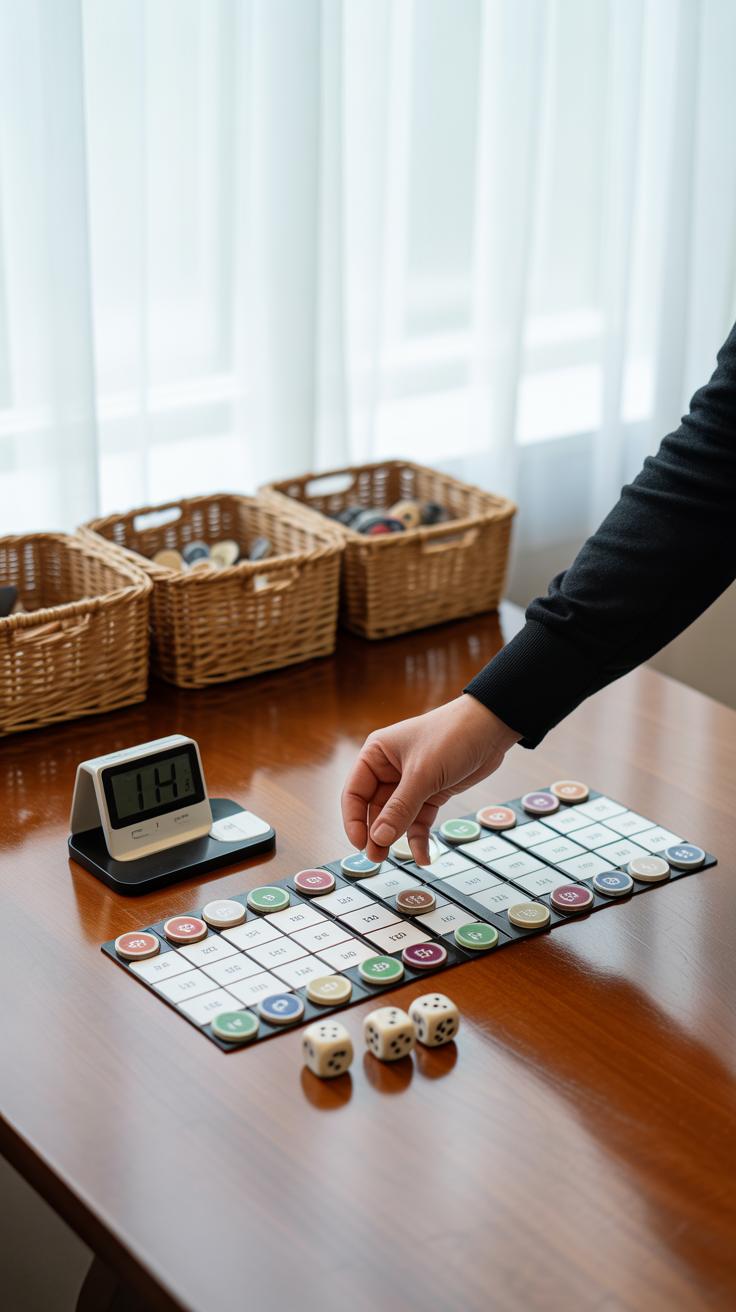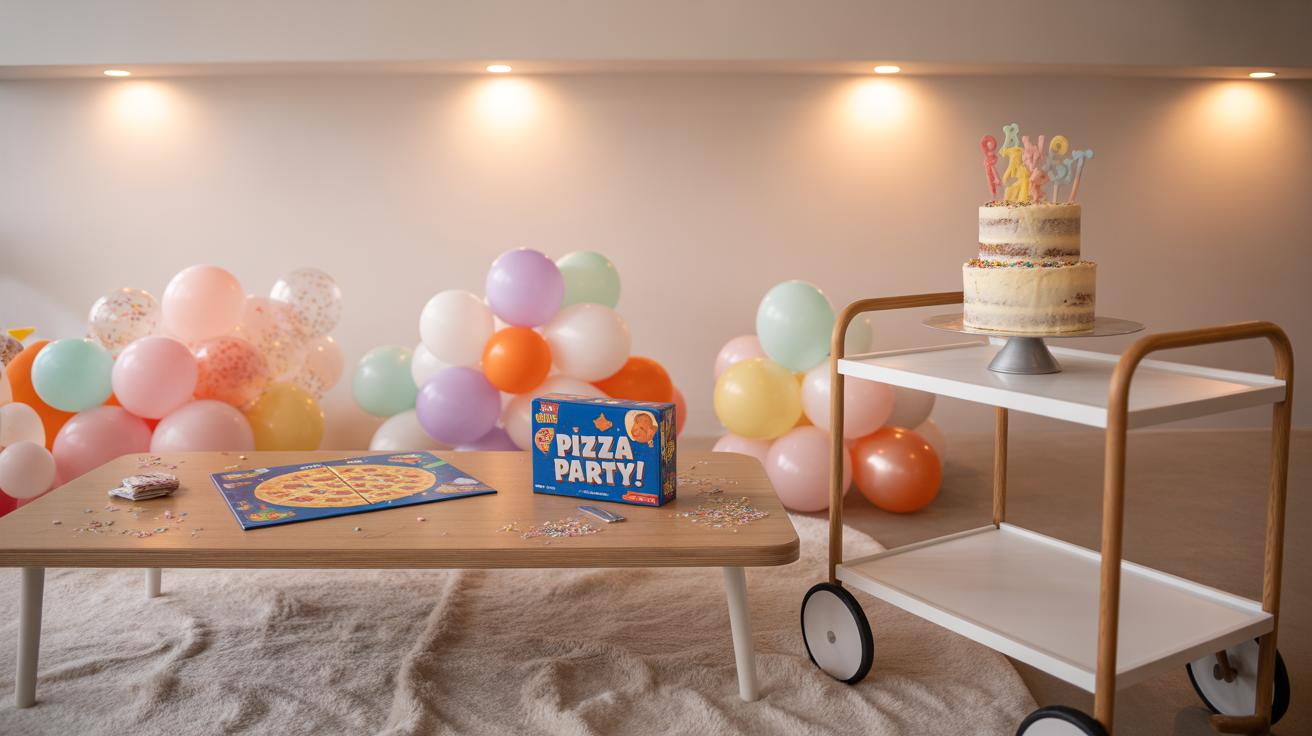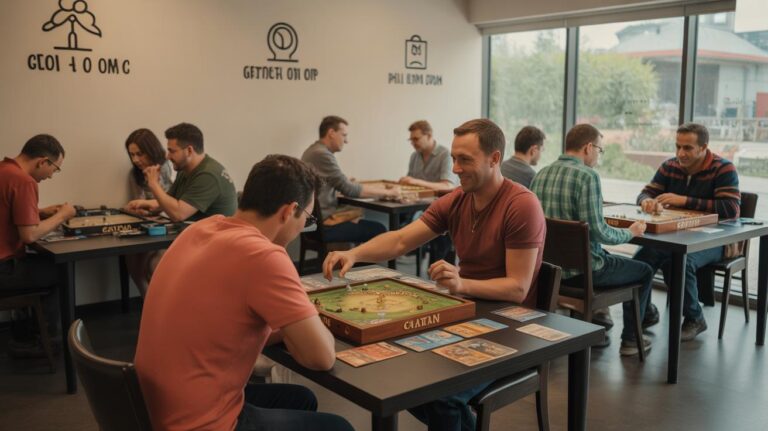Introduction
Fun sleepover games for teens and tweens turn ordinary nights into memorable experiences. Sleepovers give friends a special time to connect beyond daily interactions. These games help everyone laugh, share, and bond in lively ways. They fill the night with energy and joy that everyone remembers.
Choosing the right games makes a sleepover exciting and smooth. Different games fit different groups and moods. This article explores game types plus tips to pick and plan the best ones for your group. You’ll find ideas and strategies to make your next sleepover the highlight of your friends’ weeks.
Classic Sleepover Games That Never Fail
Classic Games For Any Group
Truth or Dare, Charades, and Pictionary are staples in the sleepover game repertoire for a reason. Take Truth or Dare, for example. It’s simple: either answer a question honestly or carry out a fun, sometimes silly task. The unpredictability of what comes next keeps everyone on their toes. Charades works by splitting players into teams and having one person act out a word or phrase without speaking, while teammates guess. It’s hands-on, quick-paced, and encourages exaggerated expressions that usually spark laughter. Pictionary is similar but uses drawing instead of acting. Players sketch a word or phrase for their team to guess under a time limit. Each game plays with anticipation — waiting to see who stumbles or nails it—and that’s part of why they fit so well into sleepless nights with friends.
How Classic Games Encourage Participation
These games get nearly everyone involved and engaged. In Truth or Dare, no one can just quietly watch forever—you’re either revealing something or stepping up to a challenge. Charades and Pictionary force teams to communicate instantly and work together, which builds lively energy in the room. To keep the momentum, try mixing up teams so people don’t always pair with the same friends, or set gentle time limits on turns to speed things up. For larger groups, you might play in smaller circles or bring in a buzzer to keep the pace fast. The fairness comes down to encouraging kind and respectful dares or guesses—steering clear of anything that might embarrass or exclude. When done right, these classics become the backbone of shared memories full of genuine smiles and chatter.
Creative Game Ideas To Inspire Imagination
Drawing And Storytelling Games
You might be surprised how drawing and storytelling can turn a sleepover into something a bit different. Games like collaborative drawing, where each person adds to the same picture without knowing exactly what the others will do, spark both creativity and a fun kind of suspense. It’s less about who’s the best artist and more about building off each other’s ideas.
Story circles work similarly. One person starts a story with a sentence or two, and each friend adds a bit more. The story can twist into unexpected places, causing lots of laughs or even some thoughtful moments. This kind of game encourages listening and spontaneity — everyone contributes, no one dominates. It’s a way to bond without needing much preparation or props.
DIY Game Creation
One of the most memorable parts of a sleepover can be inventing your own game. Teens often enjoy putting their own spin on things, like taking a classic game and tweaking the rules or combining two different games. Sometimes, the best ideas come from those “what if we tried this?” moments.
For example, you might create a quiz game where questions come from each person’s unique interests or make a scavenger hunt indoors with quirky clues. The trick is to keep everyone involved, making sure the game isn’t too complicated or exclusive. Setting simple rules and letting everyone pitch in ideas helps keep things fun, even if the game turns out a little chaotic. In the end, your homemade game probably won’t be perfect, but it’ll be uniquely yours – and that’s what makes it special.
Active Games To Keep Energy Up
Indoor Active Games
If you want to keep everyone moving without needing a huge space, indoor games like balloon volleyball are perfect. All you need is a balloon and a makeshift net, maybe a string or a line of chairs. Players hit the balloon back and forth, trying not to let it touch the floor. It’s simple, but it really gets everyone involved and laughing, especially when the balloon bounces unpredictably.
Dance-offs are another great way to burn off energy indoors. Clear a spot, play some favorite tunes, and let each person show their moves. No need for fancy steps—just encourage freedom and spontaneity. It’s fun to watch shy participants slowly let go and get into the rhythm. And the best part? You don’t need a lot of room or any special gear.
Other good options include indoor Simon Says with active commands, or freeze dance, which mixes movement and stopping at random times. These games keep the energy high but stay safe for bedrooms or small living rooms, where crashing into furniture is a real concern.
Outdoor Games For Sleepovers
When you have access to an outdoor space, nighttime games like flashlight tag add a thrilling element. The dark amplifies the chase, but carrying flashlights keeps players aware and safe. You can create simple boundaries in the yard, making it an adventurous but controlled game. It’s amazing how the shadows and beams spark excitement, even for those usually less active.
Relay races work well too, and they can be made more creative with obstacles or silly challenges—think balancing a spoon with a marshmallow or hopping on one foot. These get everyone moving in teams or alone, breaking the usual standing-around vibe that sometimes takes over at sleepovers.
Just remember to set clear rules about where everyone can go. Maybe some players get flashlights, others don’t, or use glow sticks for added safety. You want the fun to continue without anyone feeling uneasy when the night gets darker.
Team Games That Build Friendships
Collaborative Problem Solving Games
When teens and tweens come together to solve puzzles or complete challenges, something interesting happens. They naturally start talking, sharing ideas, sometimes even debating a little. Games like escape room kits or building a structure from random objects push everyone to listen and contribute.
Those moments—when someone gets stuck or offers a clever solution—create a kind of connection. You see teamwork in action: pieces clicking together, everyone playing a part. It’s not about winning; it’s about figuring things out together. You might notice shy kids opening up or a friend surprising you with a creative idea.
Some sleepovers I’ve seen ended with teams high-fiving over a tricky challenge, feeling closer than before. These games sharpen communication, but they also remind everyone how much can be done with a little cooperation. So, why not try a puzzle-based game next time and watch how teamwork grows?
Friendly Competition Games
Competition doesn’t have to mean tension. Trivia contests or scavenger hunts offer just enough rivalry to make things lively but still fun for everyone. Dividing into teams encourages talking strategy and cheering each other on.
But the key is balance. Too much pressure can spoil the night, so keep scores light or focus on participation prizes. This way, the game sparks excitement without anyone feeling left out or overly serious. You want laughter and playful teasing, not silence or frustration.
One scavenger hunt I remember had friends racing yet helping each other find clues when stuck, a curious mix of competition and kindness. Isn’t that kind of dual feeling what sleepovers are about—fun, with just a hint of challenge to keep things interesting?
Quiet Games For Relaxation And Connection
As the night winds down, the pace naturally slows. It’s the perfect time for games that don’t ask for a lot of movement, but invite everyone to relax and maybe even open up a bit. Quiet games can ease the transition from the high energy of earlier activities to a more chill atmosphere. Think of them as a chance to breathe out after all the excitement.
Conversation Starters And Icebreakers
These games ask simple, open-ended questions that invite sharing without pressure. Sometimes, a question like “What’s a small thing that made you happy this week?” sparks surprising stories. You might try “Would You Rather” tailored to personal topics or “Two Truths and a Lie” where participants reveal little-known facts. These encourage thoughtful responses and often help friends discover new sides of each other. They’re useful, especially if some guests don’t know each other well or if you want to deepen existing bonds without loud activities.
Calm Story And Word Games
Building a story one sentence at a time or playing word association keeps minds active without raising the volume. Games like “Once Upon a Time” where each person adds to a tale can get creative but still mellow. Another calming option is “20 Questions,” focusing on guessing a mystery word or object. These slow-paced games draw everyone in quietly and require listening, which feels strangely calming after a long night. They also leave space for laughter or thoughtful moments, without demanding too much energy.
Choosing Games Based On Group Interests
Observing And Asking Your Group
Picking the right games starts with understanding who’s in the room. You might think you know your friends, but unless you ask or watch carefully, you could miss what really sparks their interest. Sometimes, just casually asking things like, “What game did you like last time?” or “Are you up for something active or more chill?” gives you a solid hint. Other times, pay attention to how they reacted during previous sleepovers—did they get excited when a certain challenge came up or did they seem bored after a few minutes?
Not everyone feels comfortable speaking up, so try to include everyone in the conversation. Sometimes inviting quieter friends to share their thoughts individually can make all the difference. It’s tempting to pick your favorite game, but the goal is to create something everyone can enjoy. So be patient and give space for different opinions.
Adapting Games For Mixed Interests
No group is totally uniform. Everyone brings their own taste, energy levels, and personalities. Some might want loud, competitive action; others prefer laid-back fun. You can tweak games to fit. For example, if a game usually involves fast moves, slow it down or add optional roles that require less movement. Or maybe mix in cooperative elements so no one feels like they’re just waiting around or stuck losing all night.
Sometimes just changing the rules or the mood can make a big difference. I remember once turning a straightforward truth-or-dare into a “kindness dare” round to keep it light and inclusive. It helped keep up the fun without anyone feeling left out or overwhelmed. The trick is to stay flexible: start with one approach, then switch or soften it if you sense someone’s not having a good time.
Ultimately, you want your games to feel inviting, not exclusive. When everyone’s interests mix, a bit of adjustment goes a long way to keep the energy balanced and the group connected. You might end up learning something new about your friends along the way, too. Wouldn’t that be worth it?
Organizing Games To Maximize Fun
When planning games for a sleepover, timing really matters. Start with something lively to get everyone moving and feeling comfortable. Follow it with a quieter game to let the energy settle a bit—too much high energy nonstop can wear people out or cause restlessness. But you don’t want long stretches of calm either; that risks losing attention or excitement.
Think about mixing different kinds of games so nobody gets bored, and transitions feel natural. One approach that often works is to group games by type or energy level, then scatter them throughout the night. For example, kick off with a quick icebreaker, then drop into a strategy game or creative challenge after. See how the group reacts, and don’t hesitate to switch games early if something doesn’t click.
Reading the room is key. Sometimes you’ll think a certain game will be a hit, but the vibe says otherwise. Maybe kids are quieter or tired. In those moments, inviting shy participants by gently encouraging them helps. You might do this by pairing them with friends or suggesting roles in team games where they feel safer. Not everyone will want to jump in right away, and that’s okay. Keeping the energy balanced means paying attention to who’s ready for action and who needs a light moment.
Managing transitions between activities can be tricky. Giving a bit of warning—like a five-minute heads-up that the next game is coming—can ease the shift. Sometimes a simple snack break or music pause resets the mood. The goal is to maintain interest without forcing things too rigidly. Sleepovers are about fun, after all, not a strict schedule.
Ultimately, the best flow feels a little flexible. Have your plan but be ready to adjust depending on the group. It’s a delicate balance, but when done thoughtfully, it keeps everyone engaged and helps the whole night run smoothly.
Tips For Making Sleepover Games More Memorable
Adding simple touches like themes or prizes can completely change how your group experiences sleepover games. Choosing a theme that fits everyone’s interests—maybe a favorite movie, a seasonal vibe, or even a quirky concept like “retro gaming”—gives the whole evening a little extra cohesion. It somehow makes the games feel bigger, more special. And when prizes come into play, even small ones, they spark a bit of friendly competition without too much pressure.
Think about easy-to-get rewards like colorful stickers, fun keychains, or little treats. You don’t have to spend much. Sometimes, even a silly title like “Best Laugh” or “Most Creative Player” handed out can light up the mood. It’s the feeling of getting something that sticks with people, not the value itself.
Taking photos or short videos during games also helps freeze those moments. Later, you can share these snapshots to relive highlights or laugh over funny faces made in the heat of play. Just make sure everyone’s okay with being filmed—that bit of respect goes a long way. Asking for a simple yes or no before snapping or recording keeps things comfortable.
These little extras—themes, prizes, photos—don’t just fill time. They create memories you’ll want to go back to. And that, maybe, is why those sleepovers feel unforgettable, even years afterward.
Conclusions
Sleepover games are more than just fun—they build friendships and create lasting memories. The right games keep everyone involved and laughing late into the night. When you plan with your friends’ interests in mind, the games become even better.
Try mixing game types and keep options ready so everyone enjoys. You can create an inviting, fun space that brings friends closer together. Your thoughtful planning can make any sleepover a celebration anyone will want to repeat.

